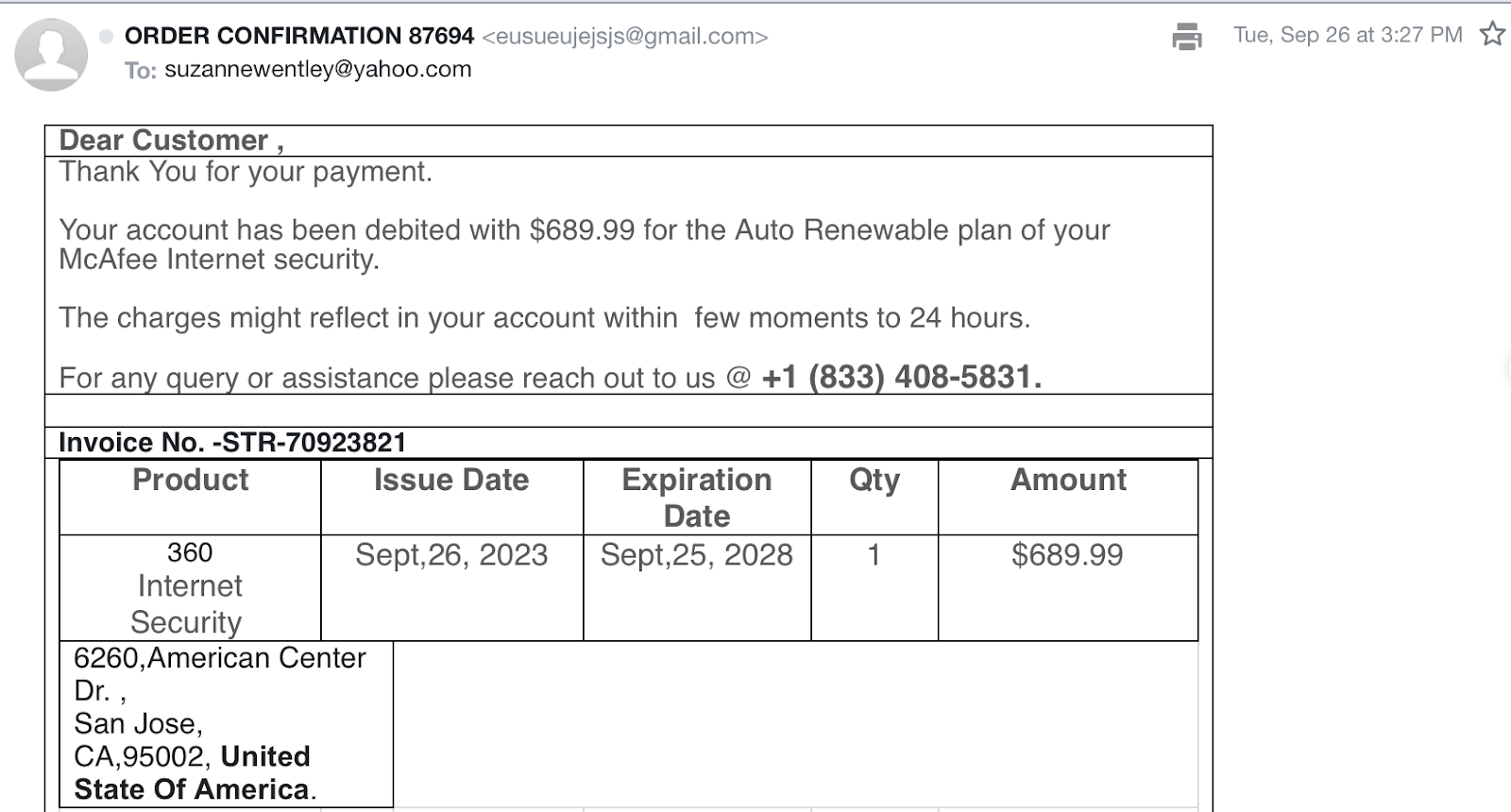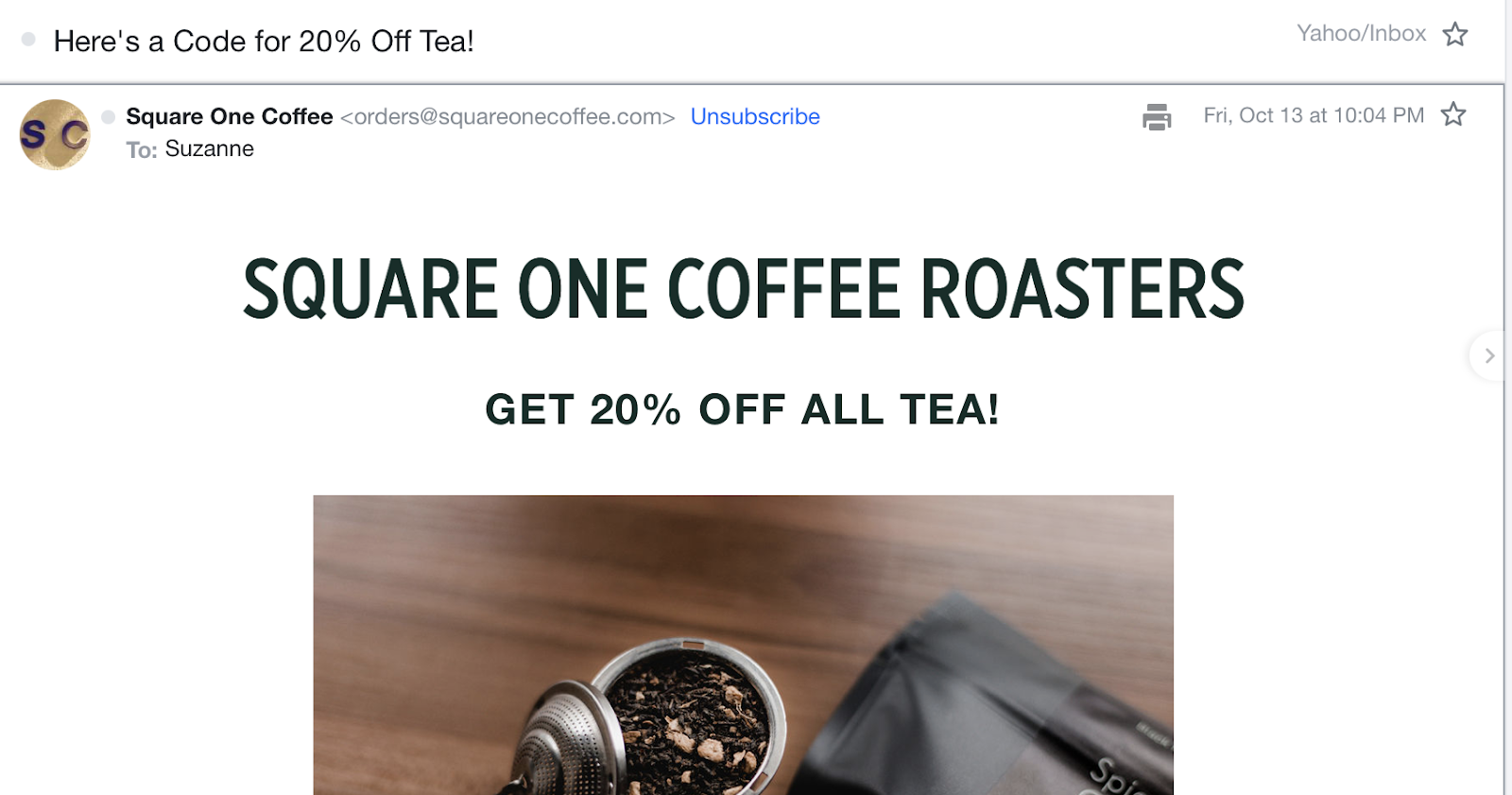
Don’t check your email a second and listen: Even if you have a robust email marketing campaign that’s a foundational part of your business outreach strategy, an average of 10% of your emails never even make it through cyberspace.
Yes, depending on a wide number of factors, emails bounce — meaning the recipient never even has a chance to look at the content you’ve created with your valuable time and effort. They also end up in spam folders and are never seen again. You want to connect with everyone who wants to connect with you. You may have thought you’d already gone through the hard part of collecting good email addresses, but it’s possible your carefully collected audience never sees your communications.
When emails land in the spam folder, the rates at which your emails work toward increasing brand awareness, new leads, sales conversions, and other metrics decrease. Your email marketing campaign is less successful due to low email deliverability.
To know how to avoid spam filters and how to improve email deliverability, learn the best practices marketing professionals use to improve their results and make those important connections with your audience every time you hit send.
What is email deliverability?
Email deliverability is the rate at which a message sent through an electronic mail platform reaches the intended recipient.
While marketing professionals will want to track how many recipients open the message and click on links embedded in the content, that won’t happen if the email is never delivered. It’s the most important first step in any email marketing campaign. If the internet service provider won’t accept the email, the recipient won’t know what they’re missing.
However, it’s worth distinguishing between email delivery and deliverability. Email delivery, often discussed as a percentage, is the number of emails that didn’t bounce. Email deliverability is more nuanced. This metric tracks whether that email not only doesn’t bounce but makes it past the filters and lands in a regular inbox. Deliverability means your email isn’t wasting away, being ignored in the “promotions” or junk folders.
Why email delivery matters to your business
As you work to improve email deliverability, you’ll instantly know why it matters: You can avoid the time you or your team members may be wasting when you make common email marketing mistakes. If you can reach 20% more people who have signed up for your email list, you’re 20% more effective in your email marketing work.
But there are other reasons that email delivery issues are worth addressing so your email marketing campaign can hit the mark every time. Email deliverability matters because:
- Engagement with current and future customers is increased when they see your emails.
- You’ll have a better return on your investment in email marketing platforms and content writers.
- Your reputation will increase as you learn how to avoid spam folders.
- Customers will trust you more as they read and relate to your targeted content.
You won’t know how much business you could have gained if you increased email deliverability, so sometimes, it’s hard to see what’s missing. But there’s a good reason why focusing on email deliverability is part of email marketing best practices. Every email that misses its reader is a wasted effort.
What is a good email deliverability rate?
The email platform you use — along with many other factors — determines the email deliverability rate you can enjoy for your business. A study by Validity in 2023 found that worldwide, only 84.8% of emails, on average, end up in an intended inbox. That translates to one in six emails getting blocked from the inbox.
However, some senders have better, and some have worse rates. The deliverability rates also vary for marketing and transactional emails, and your business likely sends both if you engage in any kind of e-commerce. A transactional email refers to something the recipient has already done, such as purchasing or placing items in a check-out cart, but has yet to complete the sale, aka an abandoned cart email. These emails are more likely to land in inboxes.
Marketing emails, meanwhile, are designed to encourage the recipient to do something, and there is often a call-to-action embedded in the message. These types of messages are sent in greater numbers rather than a direct, one-to-one transactional email that may or may not be automated.
Constant Contact, however, boasts one of the strongest email deliverability rates of all email marketing platforms. They average a 97% email deliverability rate, which clients enjoy thanks to a host of best practices that are built into the platform.
What is an email deliverability test?
There are two main ways to test email deliverability, and marketing professionals use both. First, you can monitor your email metrics to see how well your emails perform compared to the goals you’ve set for your campaign. This data is usually found on the backend of your email marketing platform. Compare the results of different campaigns or different email list segmentation for quantifiable indicators like:
- Open rate
- Click-through rate
- Unsubscribe rate
- Spam rate
If you’re getting a high number of unsubscribe or spam alerts — or a very low number of opens and clicks — you may want to implement the best practices of email marketing deliverability listed below.
Second, a variety of free online tools can be used to test the likelihood of your email ending up anywhere other than an inbox. For example, tools such as Sender Score and BarracudaCentral can check to see if the internet service provider, or ISP, you are sending from has been blacklisted somehow. When an ISP has a low sender reputation, email systems naturally presume emails are unwanted.
Plus, you can run your email through other free tools like Mail Tester or Litmus to analyze the content for anything that goes against the best email deliverability practices. For example, spam filters look for certain click-bait words, excessive exclamation points, and endless capitalization. Testing your content before you send can save you trouble later.
While a tight marketing timeline may make testing every email impossible, scheduling regular tests throughout the campaign as learning experiences is good. The more effort you put into improving deliverability and understanding why emails bounce, the easier it will be for future campaigns.
What affects the email deliverability rate?
Email deliverability rates are impacted by a few variables, all of which you can improve over time.
Sender reputation score
A sender reputation score is a number assigned to an ISP that indicates your likelihood of sending spam. Algorithms are built to take in account the number of emails you send, the frequency of the recipient marking the message as spam, the number of bounced emails, your open rates, unsubscribe rates, and whether you’re blacklisted already from specific recipients.
The higher your sender reputation score, the more likely you will enjoy successful email delivery.

Email content
With email marketing, it may be tempting to try to get noticed with all-cap words like FREE, ACT NOW, or even the seemingly innocuous CLICK HERE. But these are examples of words that will impact your email deliverability. Spam filters use algorithms to scan emails for keywords, phrases, and punctuation patterns that suggest the email isn’t wanted. Your email content, including your subject line and the body copy, must pass the filter to land in the inbox.
Using only one email list
When first starting out in email marketing, many businesses will dump every email address they receive into a single, large folder that’s used to send out every email. The problem with this is that you’ll be more likely to send an email to someone who doesn’t appreciate it — and they’ll be more likely to report it as spam.
Breaking up your email list into smaller, more targeted groups is a best practice known as email list segmentation. Spending time organizing and cleaning your email lists will go a long way toward improving email deliverability.
Your email infrastructure
How your email service provider is set up also plays an important role in how the recipient’s email services judge your emails. Not all software apps and websites verify that your emails are authenticated by both SPF and DKIM standards, but both are important. You also need to set up DMARC records. That’s a lot of alphabet soup, so work with an information professional if you’re not sure you’ve done this.
Step-by-step instructions to ensure email deliverability
Now that you have a clearer understanding of the concepts behind email delivery, you can take the steps to maximize and improve your email deliverability rate.
1. Select an email service provider
Business owners who embark on email marketing strategies for the first time may think it’s sufficient to use Google Mail, Yahoo, AOL, or Microsoft Outlook as a professional email service provider. However, this may impact your deliverability rates. Simply put, spam algorithms find it suspicious that an email service provider designed for personal communication would send out so many messages to your customers.
Instead, opt for an email service provider with a strong deliverability reputation that won’t risk your ISP getting blacklisted.
2. Set up your authentication
Next, you’ll need to authenticate the email address you will be using to send messages to your customers. This will show the recipient’s ISP that the message came from you.
When you use an email service provider like Constant Contact, you won’t need to authenticate your address.
However, you may have your own email domain with your business name through web hosting platforms like Bluehost, GoDaddy, or HostGator. Larger businesses may have their domain run through an IT department. In these situations, you can self-authenticate to be aligned with DMARC standards, through CNAME records, or DKIM TXT records.
It can feel like a complicated process, but working with an IT professional if needed will save a lot of headaches in the future.
3. Clean up your email lists
Next, it’s time to clean your email lists. Start with the list of undeliverable email addresses from the last message you sent. Delete every “hard bounce,” which refers to email addresses that no longer exist. The higher the number of hard bounces, the worse your email deliverability rate will be.
Then, spend time segmenting your email address list into smaller groups of demographics. How you’ll organize these lists is entirely dependent on your company’s products, services, and target audience. Use the data you have on your customers’ preferences.
4. Create personalized content
Once you have a more focused list of email recipients, creating meaningful content for the people who have signed up to learn more will be easier. The key word here is relevancy: Make sure everything you send is targeted for the person on the other end of the computer.
To put a fine point on it, you must spend time crafting subject lines and email content worthy of sending. Your customers want to learn about new information that helps to improve their lives in some way. Think about educating and entertaining, as well as simply selling.

Personalization makes it less likely they’ll unsubscribe or, worse, mark your message as spam.
5. Design for mobile
Email marketing platforms like Constant Contact have built-in design templates that make it easy for your messages to look as good as they sound. The visuals in your emails must come through both on desktops and mobile devices.
The majority of email users open messages using a mobile device, so it’s important to have mobile-friendly emails to keep deliverability rates high. Consider picking a single-column template, having a single, clear call-to-action, and keeping your message as short as possible.
6. Send with a schedule
Spammers tend to send huge blocks of emails at once, but spam blockers expect reputable companies to have a more regular pattern. Not only will having a set schedule help with email deliverability, but it will also build trustworthiness and consistency with your customers.
Think ahead to your busy seasons; you may need to ramp up your emails in advance. Create a marketing calendar and follow it for better results and better delivery rates, too.
Best practices for good email deliverability
Email deliverability best practices fall into three categories: Reputation, Content, and Infrastructure. Let’s take an in-depth look at all three so you can make sure you’re doing everything you can for good email delivery.
Build and maintain your email reputation
Like reputations in real life, it can take time to repair damage — that’s why it’s always better to focus on prevention with the right email habits.
Start by only sending emails to people who have signed up to receive them. It’s tempting to purchase pre-populated email lists or try your luck with cold email deliverability, but email marketing is effective in quality rather than just quantity. Remember, receiving an email is like getting a paper letter in the mail. It should feel that special.
One way to build an email list and your reputation is to send clear confirmation emails. Double-check that the person wants to receive your messages, and then always add an easy-to-find unsubscribe link somewhere in each email you send. Don’t try to trick anyone or hide communication options. You’re developing a relationship with your customers, and it’s OK that not everyone will be interested.
Then, regularly clear your email lists of addresses that returned with a hard bounce. Just note: You may see “soft bounces,” too. A soft bounce returns an email when the recipient is temporarily blocking emails, like for time away from work, if the inbox is full, or if the message is too large. Only remove those addresses if the problem persists.
To enhance your reputation, you’ll want to avoid spam traps and blacklists. One way to do this is by authenticating the sender’s email address, which should have a familiar name. No one wants an email from “NEWSHOPWOW1234@gmail.com,” but using the business owner’s full name as a sender says the person is willing to stand proudly behind whatever message the brand is sending.
Email content and design considerations
Direct mail requires personalized messaging and the time and care that comes with a beautiful design. It’s not the early 1990s anymore with the green computer font that’s hard to read. For your message to get delivered and read, it’s important to focus on the content and design of every email.
Whatever message you send should be written with the target audience in mind. This audience may differ from your separate email list segments, so think ahead as you plan your marketing campaigns to send the most relevant, relatable, and engaging message to the recipient.
Personalize your email experience
Start with an automated welcome series that initiates when the person first signs up for your email list. Keeping the demographics, goals, habits, and preferences of your target audience in the forefront, craft a series of warm, welcoming messages that share the values and style of your brand.
Having personalized content also means that the message should feel like it’s coming from one individual to another. That’s another reason why it’s a good idea to personalize the “from” field with the name of someone who can be the face of your business.
Never send an email from an address that does not accept replies. One of the powers of email marketing is initiating conversations and encouraging customers on their buying journey, but “no reply” does the opposite. You could even go a step further toward making it easy to answer questions from your customers by setting up a preference center on your website for subscribers.
Subject lines are also crucial: You’d never send something spammy to a friend, so don’t send it to your current and future customers.
Design considerations
When designing, start with a clear understanding of your brand identity. Each message should visually display the values and quality that sets your business apart from the competition. Use the same color palette, fonts, and, when appropriate, template for each email to create consistency throughout the campaign for the recipient.
You can use great design and messaging to make your emails worth the inbox space.
Technical aspects and infrastructure
Finally, you can do some backend things to improve email deliverability, too. As mentioned, you’ll want to authenticate your email ISP with DKIM, SPF, and DMARC so your messages aren’t automatically sent to spam folders. Getting your ISP off a blacklist is possible, but it takes time and high-quality content.
One way to ensure that recipients won’t mark you as spam is to implement a double opt-in process for all new email signups. To do this, make the first automated welcome email a confirmation that requires the recipient to make the extra step of clicking the call-to-action button. This will solidify the relationship with your brand in their minds, making them more alert to your messages.
What are the best email deliverability tools?
Marketing professionals recommend the following tools to help improve the rate at which emails end up in inboxes:
- To test email content: Mail Tester, Litmus, and GlockApps
- To test sender reputation: Sender Score, Talos, and BarracudaCentral
- For email marketing authentication and automation: Constant Contact
Overcome challenges to email deliverability
For many business owners, email deliverability challenges can feel overwhelming. But the more you learn about spam filters and email bounces, the easier it will be to avoid the pitfalls that make your hard work in email marketing never even seen. It’s worth the time to delete fake email addresses from your email lists and address reputation concerns for the long-term benefit of your bottom line.
To start improving your email deliverability, use free tools to check your ISP reputation. In terms of email deliverability, that means starting work on cleaning up and segmenting your email lists, creating targeted welcome series messages, and implementing a marketing schedule based on your brand and your goals for success.




